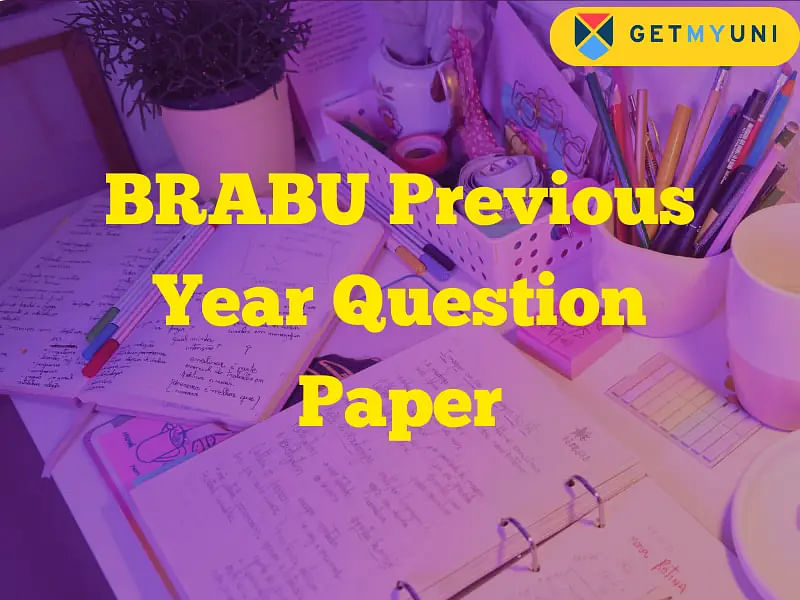Modern teaching methods involve teaching techniques involving various teaching methods like collaborative learning, flipped classrooms, self-learning, etc.
Modern teaching methods are an education procedure that focus on instructing students to enhance their intellect by using activity-based techniques. It helps them utilise new and innovative ideas while preparing to pass a strict test.
The goal of modern teaching is to help students build skills through construction rather than focusing solely on the outcome.
What is the Modern Teaching Method?

The modern teaching method is an activity-based teaching procedure. It centres the learner’s mind to indulge in the learning process. Learning and curriculum planning are done based on the learner's needs.
Besides, this concept ignites the learner's will, and they actively participate in the whole process to build their knowledge and sharpen their skills in this constructive approach. The mentor only leads and guides students to focus on the purpose of learning the topic.
Modern teaching method consists of engaging activities and the adoption of innovative modern teaching techniques.
Also Check: 10 Prioritization Techniques for Student Productivity
Why Practice Modern Teaching Methods?
Education is essential for every individual to thrive in a literate society, and the method of educating is influenced by motivation and instructions as a whole.
Teachers, guides, and administrators act as role models in this process and are accountable for encouraging learners. The literacy rate will improve in society by imparting education.
The changes in time have caused learners to demand new techniques and methods of learning so they can gain knowledge both theoretically and practically. This is the reason modern teaching methods are one of the most demanding methods in recent times, as they meet the needs of the learners.
Types of Modern Teaching Methods
Every teaching method is unique in its way and has its advantages. The various types of teaching methods are mentioned below.
1. Flipped Classroom
The flipped classroom is the most popular modern teaching technique among modern teaching methods. Traditional teaching methods require subjects to be introduced to the learners in a classroom, and then students study those topics independently in their homes.
In a flipped classroom, students learn about the subject on their own and then come to class to practise & resolve questions. The flipped method allows students to have a functional role to develop more autonomy in their learning. In this process, students become their teachers and don't rely on their mentors to teach them the topic or the subject matter.
2. Tactile Learning
Tactile learning is an educating process of demonstration and real-time activities. This teaching method also involves online classrooms, with the teacher explaining an activity and learners practising right away from their homes.
It’s best suited for practical topics and for skills where learners must acquire talent or build things. This is an active and collaborative learning phenomenon.
Further, in this type of learning method, mistakes of both learners and instructors can be spotted & rectified.
Also Check: 5 Advantages and Disadvantages of Online Education
3. VAK Learning
VAK learning involves three different types of learners like visual, auditory, and kinesthetic learners.
On one hand, visual learners soak information better when they view digital materials, while auditory learners are better listeners.
Besides, kinesthetic learners always focus on things out of context. In this process, various materials can be used to make topics easier to understand for students through various methods.
4. Project-Based Learning
The project-based learning method consists of the instructor assigning a practical or theoretical project, and pupils must perform to materialise the project. Projects aim to decode real-life problems and arrive at possible solutions.
The process involves assigning projects individually or in a group. It is an active learning process that improves creativity and problem-solving abilities and promotes practical thinking among students.
5. Problem-Based Learning
Problem-based learning procedure is a process where a problem is introduced first among students, and then the projects are assigned individually or in groups.
The learners have the responsibility to come up with a realistic solution to the problem that enhances their knowledge while allowing them to tap into their full potential.
Also Check: Skill Development Courses List for Students 2023
6. Collaborative Learning
Collaborative learning is a process where teachers or learners collaborate on a project. It helps to build valuable soft skills like teamwork, delegation, time management, collaboration, etc. Students realise their strengths and weaknesses in this learning process.
Besides, all project members are responsible for the outcome and learn about the importance of teamwork.
7. Cooperative Learning
The cooperative learning process is a learning method in which students have to collaborate to meet the target or get an outcome. It helps students to learn the art of collaboration, take responsibility, and develop collaborative team spirit.
8. Game-Based Learning
The game-based learning process in which mentors utilise students' distractions to teach them. In this process, after every achievement, the student is rewarded, which makes the learning environment entertaining and adventurous. This type of modern teaching method encourages learners to win a task to get praised and rewarded.
Also Check: 6 Coping Strategies For Student Mental Health
9. Inquiry-Based Learning
Inquiry-based learning is a popular method of teaching in modern education. Usually, the teacher asks an open-ended query or assigns a project, and students do their research to reach the goal of the task. Candidates can achieve these activities either individually or in small teams.
The teacher can equip the learners with the research method, but learners figure out further processes on their own. This process helps in building analytical and reasoning skills while igniting curiosity to know beyond. Students become responsible and observant learners, and it helps them in their careers.
10. Thinking-Based Learning
Thinking-based learning is a method of teaching which involves deeper questions and questioning the existence of truth regarding the facts. Students also learn self-reflection in this process when the teacher prompts learners to identify pros & cons and their possible solutions. This teaching strategy improves critical thinking, analytical thinking skills, and self-awareness among students.
11. Competency-Based Learning
Competency-based learning is a method of teaching where teachers use candidate assessments and hands-on projects to ensure the result. They also identify that the learner has acquired the desired learning objectives and is suitable to move on to a more advanced difficulty level.
It is a personalised learning process, and the course curriculum is not predetermined but is influenced by the student's performance. Competency-based learning advocates deep learning, where the learners are tested to prove their skills and knowledge.
12. Independent Learning
The Independent learning method is a method of teaching in which students get full control of their learning process. The teacher in this method can only be a facilitator while giving resources and feedback.
Independent learning is personalised and flexible and provides autonomy & freedom for learners to learn. Yet, students have to be very motivated and self-disciplined to get their desired outcomes.
Characteristics of Modern Teaching Method
Modern teaching methods have various unique characteristics devoted to helping and growing students’ intellectual abilities and talents. Some of the characteristics of modern teaching methods are stated below.
- Learner-Centric: Modern teaching methods are developed to focus on learners, and learners are the priority in the classroom. This happens mostly in basic science and technology curriculum (BTS). In this type of learning method, student's interests are the primary focus in the classroom rather than the secondary focus.
- Task-Based or Activity-Based: Modern teaching methods coach students via activities and specialised tasks to widen their learning perspectives.
- Resource-Based: Teachers using modern teaching methods are often committed to nurturing students' abilities. They practise the art of encouraging the use of various useful project materials.
- Interactive in Nature: In modern teaching methods, lessons, projects, and assignments are very interactive. It keeps students focused on the class, and their interest in knowing more increases.
- Peer Collaboration: Modern teaching methods not only encourage students to understand from tutors but also from their peers. Peer cooperation helps students gain all of the learnings and feedback required for development.
Advantages of Modern Teaching Method
Modern teaching methods are usually learner-based rather than curriculum-based. The curriculum is formed keeping in mind the interests, improvements, and learning required for students. Candidates can find the advantages of modern teaching methods stated below.
- Modern teaching methods are more interactive and keep students engaged in a learning environment. It holds the interest of students through various technologies like animations and video clips.
- The visual medium is way more useful than any other medium to give education. It allows one to memorise the concept quickly, and they can remember the lessons for a longer period.
- Modern methods of teaching are less time-consuming. Instructors take a shorter time to cover the syllabus.
- Mentors use various technologies like smart classrooms, videos, and audio to make a student learn the topic. Students catch on faster as they find it interesting.










